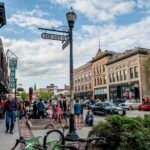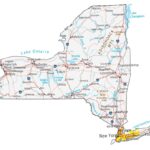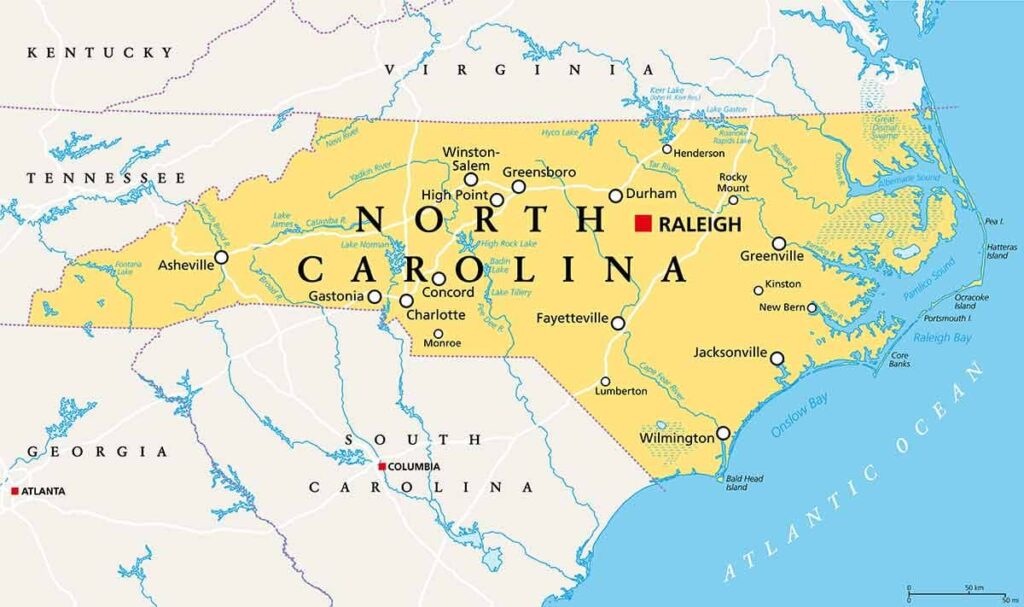
North Carolina, a state known for its diverse landscapes ranging from the Appalachian Mountains to the Atlantic Coast, is also home to dynamic urban centers that contribute significantly to its economy and cultural richness. This article explores the ten largest cities in North Carolina, highlighting their growth, unique attributes, and what makes them integral to the Tar Heel State’s identity.
Charlotte: The Queen City’s Rise
Charlotte, known as the Queen City, is a beacon of urban growth and financial prowess in North Carolina. Home to several Fortune 500 companies, including Bank of America and Wells Fargo’s East Coast operations, it stands as the second-largest banking center in the United States. Charlotte’s skyline, marked by modern high-rises, symbolizes its economic boom. Beyond finance, the city boasts a vibrant cultural scene, with institutions like the Blumenthal Performing Arts Center and the Levine Museum of the New South. The NASCAR Hall of Fame and the U.S. National Whitewater Center highlight its diverse recreational offerings, making Charlotte a dynamic place to live and visit.
Raleigh: A Capital of Innovation
Raleigh, the state capital, thrives at the heart of the Research Triangle, known for its technological research and esteemed educational institutions like North Carolina State University. This city merges a rich historical heritage with a forward-looking perspective, offering a high quality of life with its green spaces, such as the Pullen Park and the Raleigh Rose Garden. Raleigh’s innovation ecosystem is supported by numerous tech startups and research facilities, driving advancements in software, biotech, and clean energy. Its legislative buildings and historic sites, including the North Carolina Museum of History, add governmental and cultural depth to the city’s modern vibrance.
Greensboro: History and Revitalization
Greensboro plays a significant role in American history, notably as a site of the civil rights movement’s Woolworth sit-ins. This act of nonviolent protest is commemorated at the International Civil Rights Center & Museum, located in downtown Greensboro. The city has undergone substantial revitalization, transforming its once-industrial landscape into a hub of arts, culture, and higher education. Greensboro’s downtown area is now vibrant with galleries, shops, and restaurants, while the city maintains its commitment to green spaces, as seen in the expansive Greensboro Arboretum. The community’s investment in historical preservation alongside new development mirrors its respect for the past and hope for the future.
Durham: Education and Healthcare Hub
Durham is distinguished by its world-class educational institutions and healthcare sector, anchored by Duke University and the Duke University Medical Center. This city is a powerhouse of medical research and patient care, contributing significantly to global health advancements. Durham’s educational environment fosters a culture of innovation, attracting researchers, academics, and professionals from around the world. The revitalized downtown area, including the American Tobacco Historic District, combines industrial heritage with modern entertainment, dining, and shopping. Durham’s commitment to arts and culture is evident in its support for venues like the Durham Performing Arts Center, making it a nurturing ground for creativity and community engagement.
Winston-Salem: The City of Arts and Innovation
Winston-Salem, with its dual heritage of tobacco manufacturing and Moravian traditions, has evolved into a city of arts and innovation. It is home to the renowned University of North Carolina School of the Arts, fostering a vibrant arts scene that permeates the city. Innovation Quarter, a research and business district, exemplifies the city’s transformation into a center for biotech research and tech startups. Historic sites like Old Salem Museums & Gardens offer a glimpse into the city’s early Moravian settlers’ lives, blending historical preservation with educational outreach. Winston-Salem’s blend of cultural richness and entrepreneurial spirit marks it as a city looking towards the future while honoring its past.
Fayetteville: Military Pride and Community
Fayetteville’s identity is deeply intertwined with the military, proudly serving as home to Fort Bragg, one of the largest military installations in the world. This close relationship fosters a strong sense of community and patriotism, evident in the city’s support for soldiers and veterans. The Airborne & Special Operations Museum, located downtown, offers educational exhibits on military history, reflecting Fayetteville’s commitment to honoring its service members. The city also offers diverse cultural experiences, from the Cape Fear Botanical Garden to the vibrant arts and dining scene downtown, showcasing Fayetteville’s resilience and dynamic community spirit.
Cary: A Blossoming Suburb
Cary stands out as one of North Carolina’s fastest-growing towns, known for its safety, cleanliness, and family-friendly atmosphere. Its parks, such as the Fred G. Bond Metro Park, and greenways offer ample outdoor recreation opportunities, contributing to residents’ high quality of life. Cary’s strategic location within the Research Triangle makes it attractive to professionals seeking a balance between suburban tranquility and access to high-tech jobs. The town’s diverse population is reflected in its cultural festivals, international cuisine, and the Cary Arts Center, highlighting Cary’s commitment to fostering an inclusive and vibrant community.
Wilmington: Coastal Charm and History
Wilmington, nestled by the Cape Fear River and close to the Atlantic Ocean, offers a unique blend of coastal beauty and historic charm. Its historic riverfront district is lined with cobblestone streets, boutiques, and restaurants, anchored by the Battleship North Carolina. Wilmington’s beaches, including Wrightsville Beach, are perfect for sunbathing, surfing, and boating, making it a popular destination for both tourists and residents. The city’s commitment to preservation is evident in its restored antebellum homes and landmarks, while the University of North Carolina Wilmington adds youthful energy and educational excellence to this coastal gem.
High Point: The Home Furnishings Capital
High Point has earned its reputation as the “Home Furnishings Capital of the World,” hosting the largest home furnishings trade show in the world twice a year. This event attracts buyers, sellers, and designers globally, significantly impacting the local economy and showcasing High Point’s leadership in the furniture industry. Beyond furniture, the city is investing in community and economic development, with projects like the revitalization of downtown High Point and the creation of a multi-use stadium. High Point’s blend of industry leadership and community focus makes it a key player in North Carolina’s urban landscape.
Concord: Racing into the Future
Concord is synonymous with motorsports, home to the Charlotte Motor Speedway, which hosts NASCAR races and attracts fans from across the nation. The city’s economy benefits not only from racing but also from a growing retail sector, including Concord Mills, one of the state’s top tourist destinations. Concord’s commitment to family-friendly entertainment and recreation is evident in its parks, golf courses, and the SEA LIFE Charlotte-Concord Aquarium. With its mix of high-speed excitement and community-oriented development, Concord exemplifies a city racing toward growth and innovation while maintaining a strong sense of community.
Comparative Table: At a Glance – North Carolina’s Urban Giants
| City | Population | Major Attractions | Official Website |
|---|---|---|---|
| Charlotte | 885,708 | NASCAR Hall of Fame, U.S. National Whitewater Center | charlottenc.gov |
| Raleigh | 474,069 | North Carolina Museum of Natural Sciences, Pullen Park | raleighnc.gov |
| Greensboro | 296,710 | Greensboro Science Center, International Civil Rights Center & Museum | greensboro-nc.gov |
| Durham | 278,993 | Sarah P. Duke Gardens, Durham Performing Arts Center | durhamnc.gov |
| Winston-Salem | 249,545 | Old Salem, Reynolda House Museum of American Art | cityofws.org |
Graphical Representations
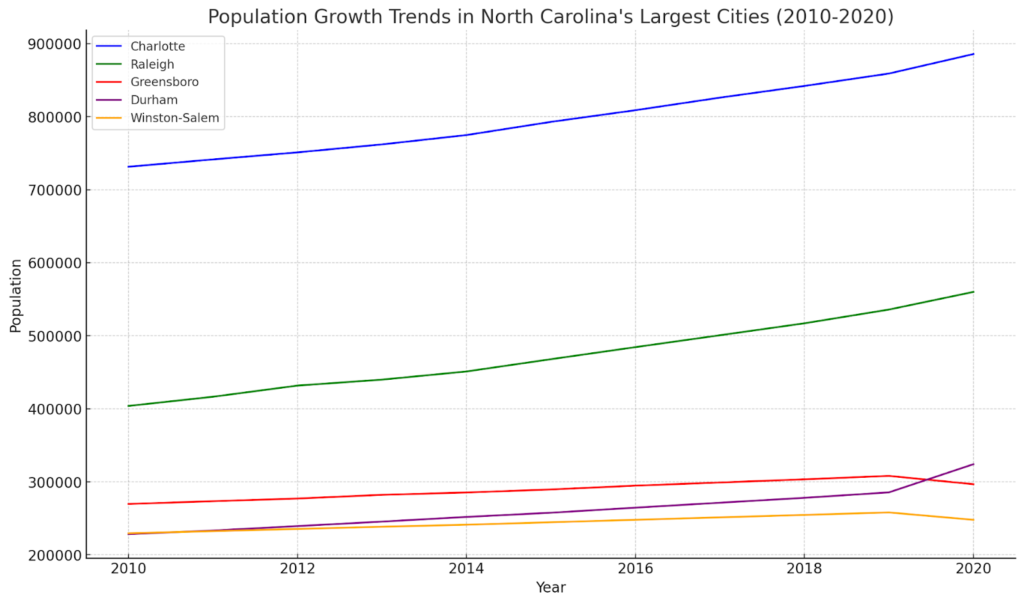
Population Growth Trends in North Carolina’s Largest Cities (2010-2020): This line graph shows the population growth trends for Charlotte, Raleigh, Greensboro, Durham, and Winston-Salem from 2010 to 2020. Each city is represented by a distinct color line, illustrating the changes in population over the decade.
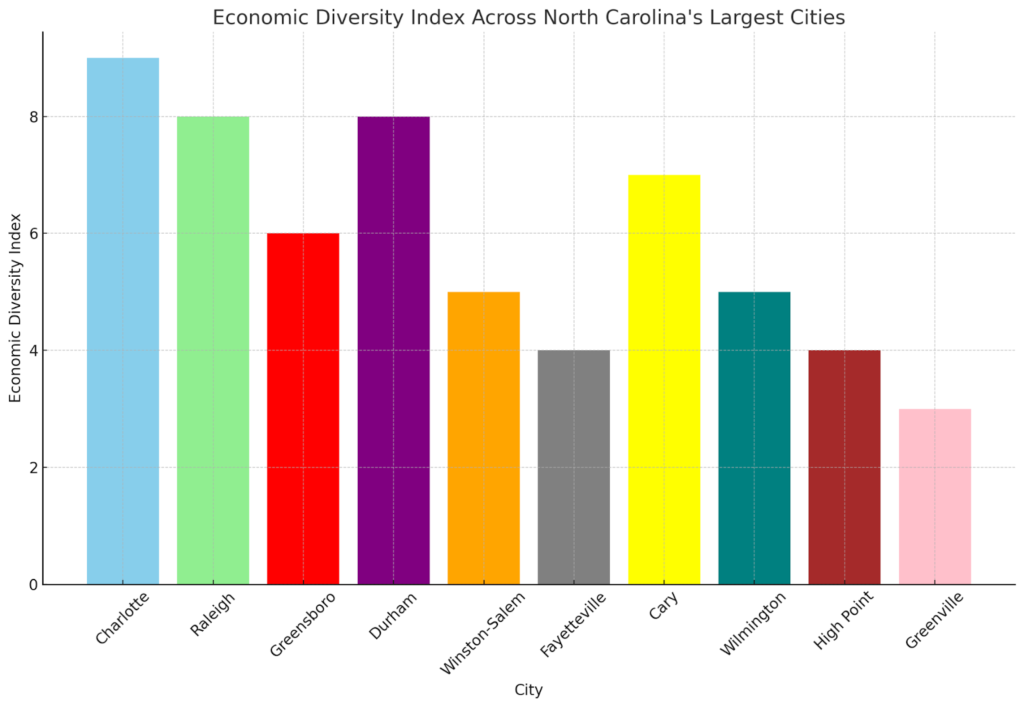
Economic Diversity Index Across North Carolina’s Largest Cities: This bar chart represents the Economic Diversity Index for the 10 largest cities in North Carolina, with hypothetical values assigned to represent the diversity or strength of each city’s key economic sectors. Each bar is color-coded according to the dominant economic sector in each city, providing a visual representation of economic diversity across the cities.
Conclusion
The ten largest cities in North Carolina each play a pivotal role in the state’s economic, cultural, and social fabric. From the financial hubs and centers of innovation to the historical towns with evolving identities, these cities reflect the diversity and dynamism of North Carolina. As they continue to grow and adapt, they offer a glimpse into the state’s promising future, making North Carolina a vibrant and attractive place to live, work, and explore.
Last modified: February 29, 2024
